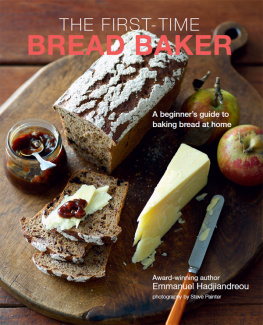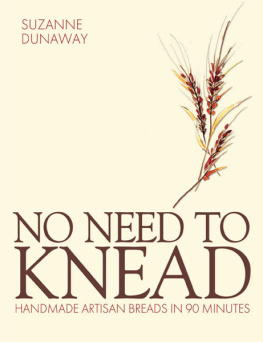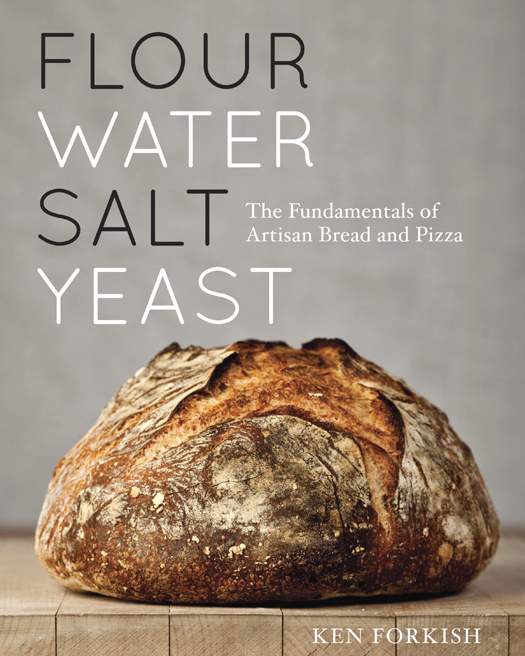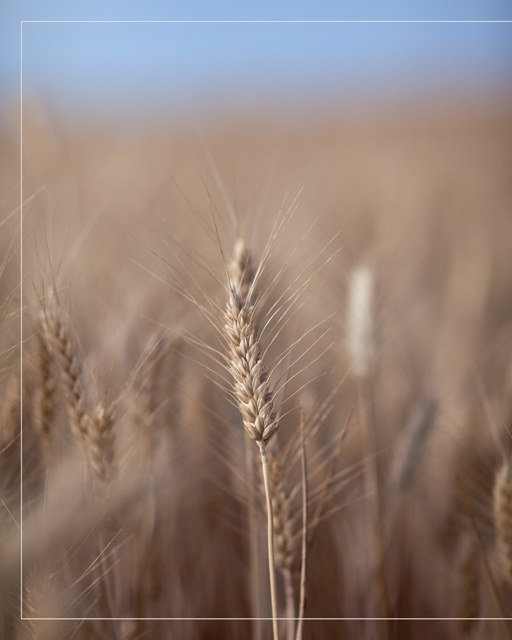
Copyright 2012 by Ken Forkish
Photographs copyright 2012 by Alan Weiner
All rights reserved.
Published in the United States by Ten Speed Press, an imprint of the Crown Publishing Group, a division of Random House, Inc., New York.
www.crownpublishing.com
www.tenspeed.com
Ten Speed Press and the Ten Speed Press colophon are registered trademarks of Random House, Inc.
The is used with permission from the North American Millers Association.
Library of Congress Cataloging-in-Publication Data
Forkish, Ken.
Flour water salt yeast : the fundamentals of artisan bread and pizza / Ken Forkish.
p. cm.
Includes index.
1. Bread. 2. Pizza. I. Title.
TX769.F67 2012
641.815dc23
2012012080
eISBN: 978-1-60774-274-6
v3.1
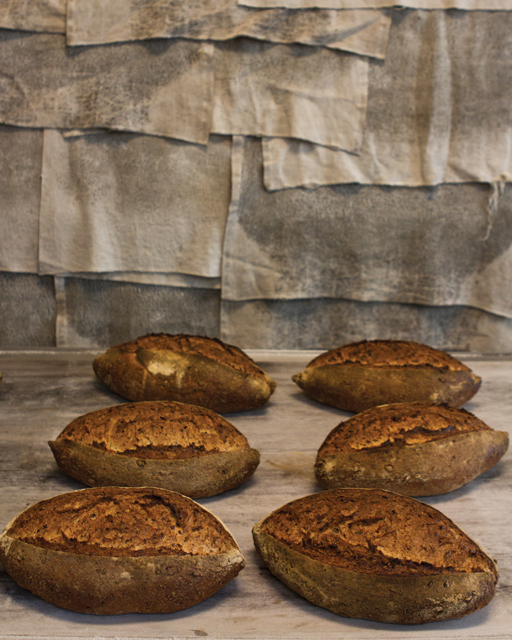
To my parents, John and Frances Forkish
CONTENTS
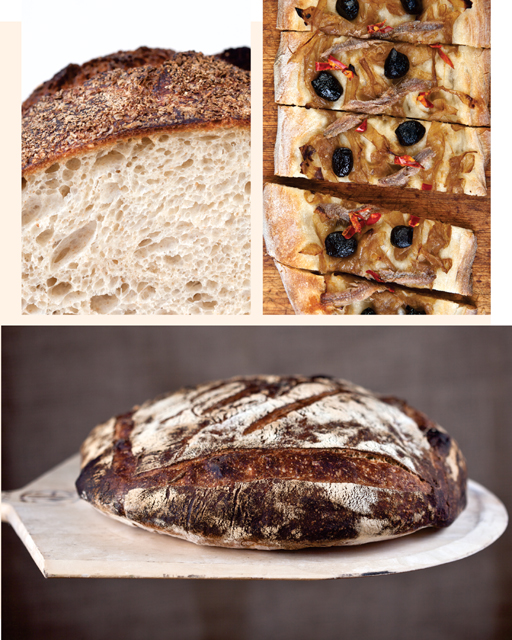
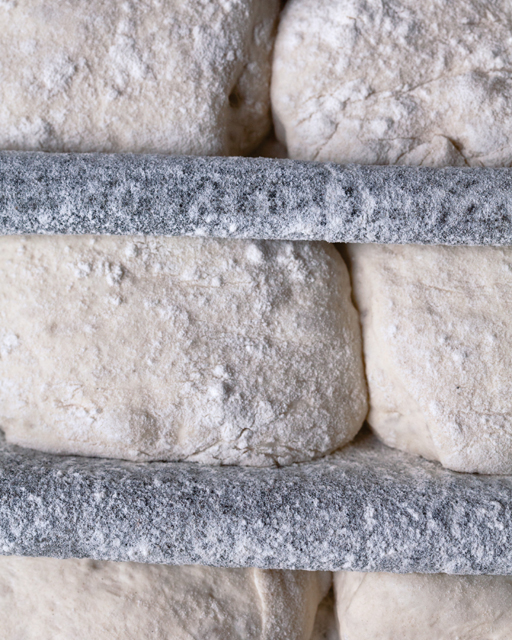
INTRODUCTION
I ts been five hundred years since I opened Kens Artisan Bakery in Portland, Oregon. Thats in bakery years, of course. My bakery actually opened in 2001. I had recently left a nearly twenty-year corporate career for the freedom of running my own venture and doing something I loved. In the time leading up to this risky transition, before I knew what that venture would be, I yearned for a craft and wanted to make a living doing something I could truly call my own. But I was itchy and I didnt know where to scratch! For many years, I waited for that lightbulb moment of awareness that would signal an open path worth taking. Then, in the mid-1990s, my best friend gave me a magazine featuring the famed Parisian baker Lionel Poilne. That article gave me the inspiration I was looking for. Not long after that, I began making frequent trips to Paris, and I was deeply inspired by the authentic, tradition-bound boulangeries I visited there. After a few years and a series of evolving ideas, I ended up with a perhaps naive plan to open a French bakery somewhere in the United States. My hope was to re-create the style and quality of the best breads, brioches, croissants, cannels , and other specialties found at boulangeries and patisseries all over France.
My ensuing career transition was more Mr. Toads Wild Ride than simple job change. You could say I answered the call of that ancient Chinese curse: May you live in interesting times. But I came out on the other side with a firm love of the bakers craft, acknowledging it as much more hard work than romance. The daily rhythms of life as a professional baker, once nearly overwhelming, now provide comfort. The aromas, the tactile nature of the work, and the way the finished products look takes me to a faraway place that is still present, and to have that be the way I spend my days continues to thrill me.
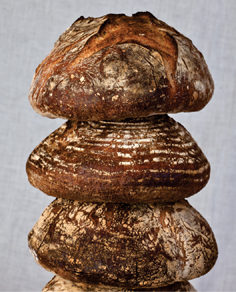
ABOUT THIS BOOK
I was fortunate to train with many excellent bakers in the United States plus two in France during the two-year between-careers period before I opened my own bakeshop in Portland. What struck me during my professional baking training was that the most important lessons I was learninghow to use long fermentation, pre-ferments, autolyse, and temperature management, for examplewere not discussed in any of the bread books I had read. I later encountered books that did detail these things (like those by Raymond Calvel and Michel Suas), but they were targeted to the professional. I was sure that the techniques I had learned could apply to the home baker too.
In the years that followed the opening of Kens Artisan Bakery, several notable baking books were published. But I still saw an opportunity to address the techniques used in a good artisan bakery and how they could be adopted for the home kitchen. I wanted to write a book that didnt totally dumb down these techniques, since the concepts really arent that difficult for the nonprofessional baker to apply. And I wanted to break from the mold prevalent in almost every bread book out there (at least until very recently): that every recipe had to use a rise time of just one to two hours. Further, I was completely motivated to demonstrate how good bread can be when its made from just the four principle ingredients: flour, water, salt, and yeast.
I also saw the opportunity to address how to make great bread at home with each of the three principle techniques of dough fermentation: straight doughs, doughs made with pre-ferments, and levain doughs, including an easy, unintimidating method for making a levain culture from scratch in just five days using only whole grain flour and water.
In order to accurately use this books recipes and follow its logic, I ask you to use an inexpensive digital kitchen ) and they are included only to allow you to bake from this book while you are contemplating which digital kitchen scale to buy.
My purpose in writing this book is twofold: First, I want to entice novices to bake, so it is written for a broad audience. Total beginners can dive right in with one of the entry-level recipes, those breads, try recipes that involve an extra step, like mixing a poolish the night before. Once you have mastered the poolish and biga recipes, try making a levain from scratch and enjoy the particular pleasures of bread or pizza dough made with this culture. By the time you work your way through this book, you will be baking bread in your home kitchen that has a quality level approaching that of the best bakeries anywhere, along with Neapolitan-style pizza that would make your nonna smile.
Second, this book is also written for more experienced bakers who are looking for another approach to making doughone that treats time and temperature as ingredientsand who are perhaps looking for an accessible (or just different) method for making great-tasting levain breads. Mixing dough by hand, a process used in all this books recipes, may also be new. To me, one of the most unique and important aspects of bread baking is its tactile nature. In asking you to mix the dough by hand, I am also asking you to think of your hand as an implement. Mixing by hand is easier than using a mixer, is fully effective, and teaches you the feel of the dough. People have been mixing dough by hand for thousands of years. If our ancestors did it, we can. And if you havent done it before, I hope you get great satisfaction from the process and feel a connection to the past and the history of baking, like I do.
FUNDAMENTALS AND METHODS
When you read the recipes in this book, youll see that they tend to be quite similar in many regards. All of the breads and pizza doughs call for 1,000 grams of flour and often have only slightly differing quantities of water and salt. Although they do vary in types of flour used, in some cases the main differences are in type of leavening and the timeline for development of the dough. Altering these variables can produce a wide variety of breads from very similar formulas. The format of the ingredients lists is designed to help you see these relationships. Basically, they are bakers percentage tables. As youll notice, the ingredients arent always listed in the order in which theyre used; rather, flour, water, salt, and yeast are always listed in that order, descending by weight. This allows you to compare recipes at a glance.


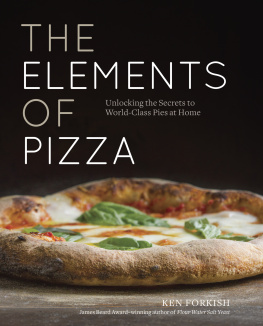
![Ken Forkish - Evolutions in Bread: Artisan Pan Breads and Dutch-Oven Loaves at Home [A baking book]](/uploads/posts/book/323066/thumbs/ken-forkish-evolutions-in-bread-artisan-pan.jpg)

